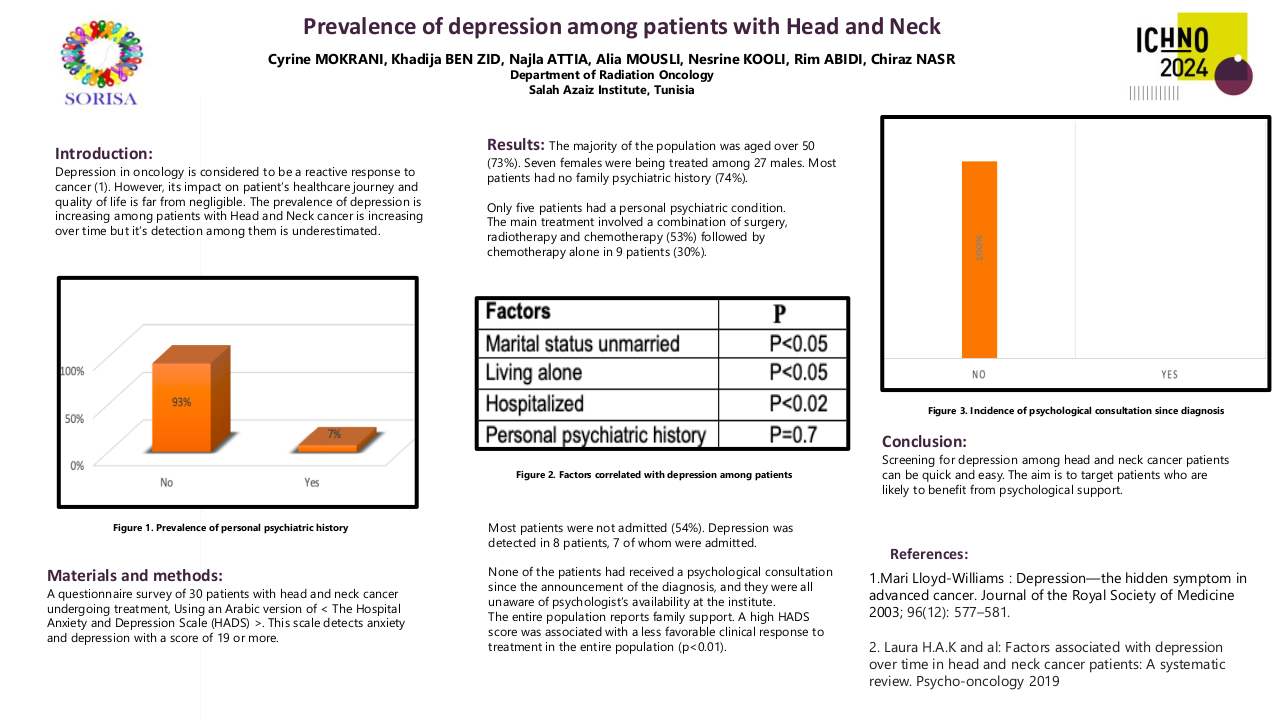Long Term Outcomes following Unilateral Treatment for Squamous Cell Carcinoma of Unknown Primary
Purpose/Objective
Squamous cell carcinoma of unknown primary (SCCUP) accounts for up to 5%1-4 of cancers in the head and neck region and are defined as “metastatic disease in the lymph nodes of the neck without any evidence of a primary tumour of the upper aerodigestive tract”5. It typically presents as a painless neck lump and, as a diagnosis of exclusion, requires extensive investigation.
Due to the rarity of SCCUP, management is largely determined by individual institutions depending on local experience and expertise. Much debate in the literature currently centres on management of the ipsilateral versus bilateral adjuvant neck and irradiation of the site of potential primary.
Current practice is evolving nationally due to improved radiotherapy techniques and knowledge of long-term outcomes of dysphagia and aspiration at risk structures (DARS) irradiation. In addition, the integration of procedures such as Transoral Robotic Surgery (TORS) mucosectomy into the pathway with a view to addressing the diagnostic void is emerging. It is anticipated that updated US ASCO guidelines and RCR consensus statement when published will assist.
In our centre, treatment typically involves surgery to neck followed by adjuvant radiotherapy to the cervical nodal regions and ipsilateral oropharynx with or without chemotherapy. This study reports our long term outcomes following this treatment.
Material/Methods
Electronic notes were reviewed retrospectively of patients diagnosed from 2007-2019 with SCCUP. All patients included were staged as Tx M0, (TNM 7), and treated with radical intent and neck dissection. Patient demographics, tumour characteristics, treatment details and outcomes were collated.
Results
Eighty two patients were identified, 75 patients underwent unilateral neck dissection, one patient had excision biopsy of the neck and 6 patients underwent bilateral neck dissection. Median age at presentation was 60 years, 71 were male; p16 status was available for 41 patients, 32 positive and 9 negative. The commonest staging was Tx N2b M0 in 40 patients. Median follow up of 6.5 years.
Sixty three patients received adjuvant treatment; 32 patients with radiotherapy and concurrent chemotherapy and 31 patients with radiotherapy alone. Loco-regional control rate was 76%. Four patients (6.3%) developed mucosal emergence, 8 patients (13%) developed nodal recurrence and 6 patients developed distant metastases (9.5%).
Nineteen patients had no adjuvant treatment. Loco-regional control rate was 42%. Nine patients (47%) developed mucosal emergence, most common site was ipsilateral tongue base in 6 patients (67%). Of these 9 patients, 6 also developed neck recurrence. One patient developed neck recurrence alone and underwent further surgery followed by post-operative radiotherapy. Two patients developed distant metastases.
Neck recurrence rate was higher when patients had no adjuvant treatment following surgery (37% vs 12%). Primary mucosal emergence was also higher in patients who did not receive adjuvant treatment (47% vs 6.3%). Contra lateral neck recurrence occurred in 2 patients (3.1%) following ipsilateral adjuvant treatment.
Conclusion
Surgery to neck followed by adjuvant radiotherapy with or without chemotherapy to neck and ipsilateral oropharynx in patients with SCCUP offers excellent rates of loco regional control. Our data supports the use of ipsilateral neck radiotherapy, showing low rates of contra-lateral recurrence.
Radiotherapy to potential primary was associated with low rates of mucosal emergence. The high rate of primary mucosal emergence and local neck failure in patients without adjuvant radiotherapy supports its integral role in long-term loco-regional control.
More work needs to be done to establish the role of TORS in the management of these patients.
1. Grau C, Johansen LV, Jakobsen J, Geertsen P, Andersen E, Jenson BB. Cervical lymph node metastases from unknown primary tumours: Results from a national survey by the Danish Society for Head and Neck Oncology. Radiother Oncol. 2000;55(2):121-129. Doi: https://doi.org/10.1016/S0167-8140(00)00172-92. Jereczek-Fossa BA, Jassem J, Orecchia R. Cervical lymph node metastases of squamous cell carcinoma of an unknown primary. Cancer Treat Rev. 2004;30(2):153-164. Doi: 10.1016/j.ctrv.2003.10.0013. Waltonen JD, Ozer E, Hall NC. Metastatic Carcinoma of the Neck of Unknown Primary Origin Evolution and Efficacy of the Modern Workup. Arch Otolaryngol Head Neck Surg. 2009;135(10):1024-1029. Doi: 10.1001/archotol.128.1.584. Strojan P, Ferlito A, Langendijk JA, Corry J, Woolgar JA, Rinaldo A, Silver CE, Paleri V, Fagan JJ, Pellitteri PK, Haigentz M Jr, Suarez C, Robbins KT, Rodrigo JP, Olsen KD, Hinni ML, Werner JA, Mondin V, Kowalski LP, Devaney KO, de Bree R, Takes RP, Wolf GT, Shaha AR, Genden EM, Barnes L. Contemporary management of lymph node metastases from an unknown primary to the neck: II. A review of therapeutic options. Head Neck. 2013;35(2):286-293. Doi: 10.1002/hed.218995. Galloway TJ, Ridge JA. Management of Squamous Cancer Metastatic to Cervical Nodes With an Unknown Primary Site. J Clin Oncol. 2015;33(29):3328-3337. Doi: 10.1200/JCO.2015.61.0063






